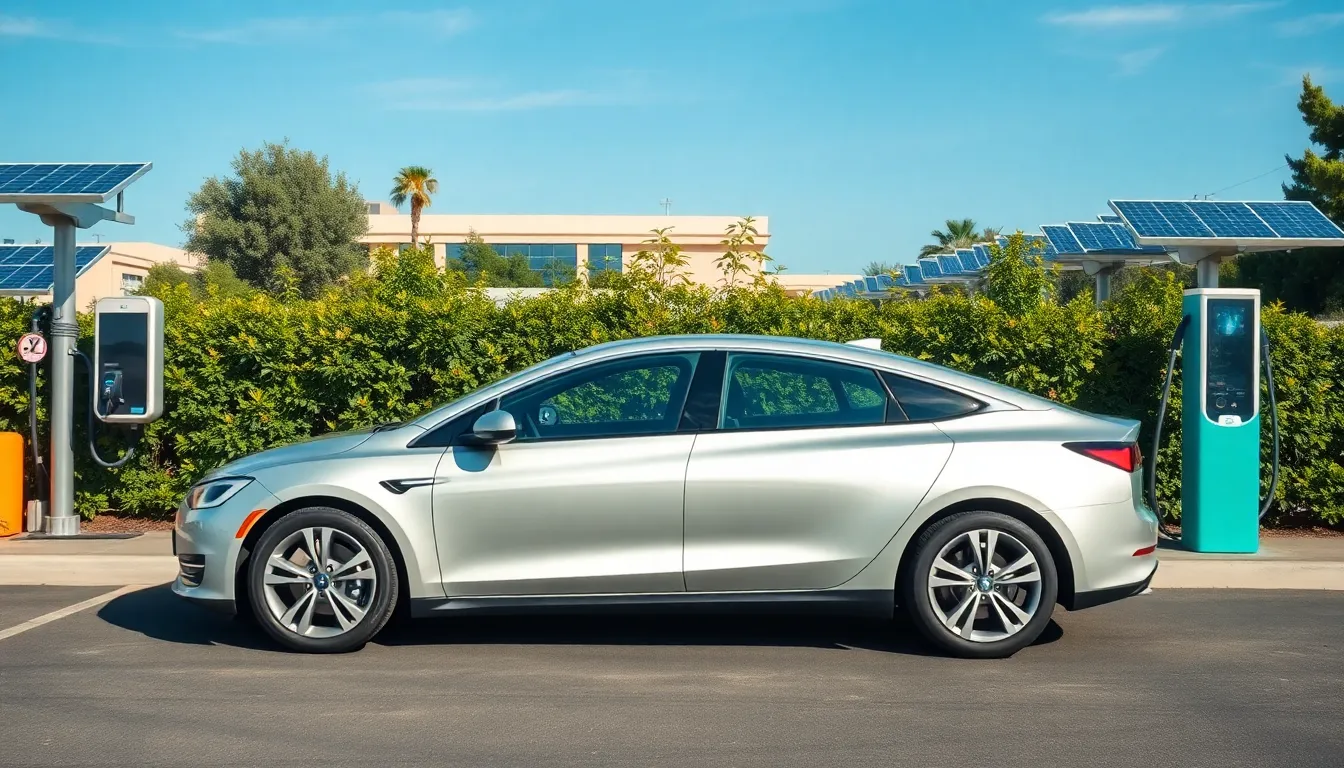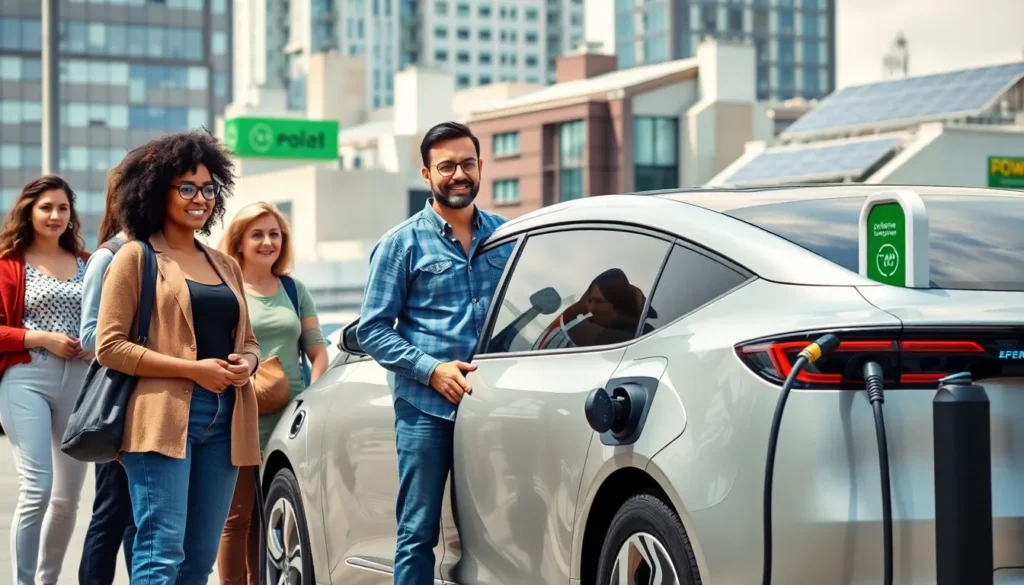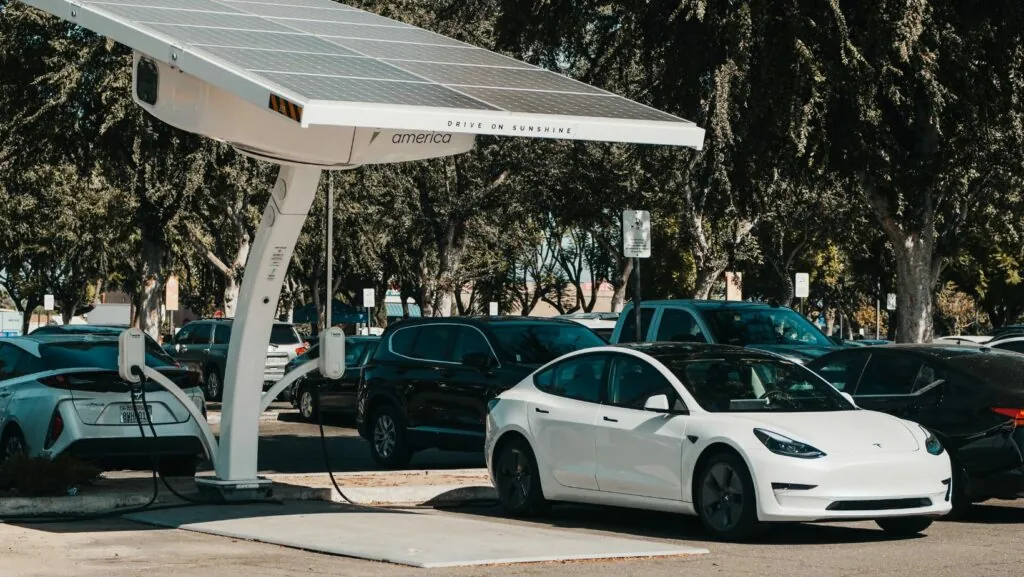The electric vehicle ecosystem is like a bustling city where innovation meets sustainability, and everyone’s invited to the party. Imagine zipping around town in a car that not only saves you money on gas but also helps save the planet. It’s not just a dream; it’s the reality of the electric vehicle revolution.
Table of Contents
ToggleOverview of the Electric Vehicle Ecosystem
The electric vehicle ecosystem comprises various components working together to support the growth and functionality of electric vehicles (EVs). Charging infrastructure plays a crucial role, with over 100,000 public charging stations available across the United States. This accessibility fosters convenience for EV users and enhances the overall driving experience.
Manufacturers contribute significantly to the ecosystem by producing diverse electric models. Leading brands, such as Tesla, Nissan, and Chevrolet, provide options that cater to different consumer needs and preferences. Battery technology continues to advance, increasing the range and efficiency of EVs, with many models now exceeding 300 miles on a single charge.
Government policies influence the ecosystem by encouraging EV adoption through incentives. Many states offer tax credits, rebates, or reduced registration fees for electric vehicle purchases. These financial incentives lower the overall cost and make electric vehicles more appealing to a broader audience.
Consumers benefit from the electric vehicle ecosystem in multiple ways. Lower operating costs result from reduced fuel consumption and maintenance needs. According to the U.S. Department of Energy, EVs can save drivers an average of $800 annually on fuel expenses compared to traditional gasoline vehicles.
A network of stakeholders, including energy providers and technological innovators, drives the evolution of the electric vehicle ecosystem. Utilities explore renewable energy sources to charge EVs sustainably, while tech companies develop applications that facilitate efficient monitoring of charging stations. This collaboration not only integrates power management but also promotes energy conservation.
Such a vibrant ecosystem contributes to reducing carbon emissions, thus supporting a healthier planet. With continuous advancements and growing public awareness, the electric vehicle ecosystem significantly impacts transportation and environmental sustainability.
Components of the Electric Vehicle Ecosystem

The electric vehicle ecosystem consists of several interrelated components that work together to enhance functionality and usability.
Electric Vehicles
Electric vehicles stand at the forefront of this ecosystem. Various manufacturers, including Tesla, Nissan, and Chevrolet, offer diverse models to meet consumer demands. Many of these vehicles now achieve ranges exceeding 300 miles on a single charge, addressing range anxiety. Innovations in motor technology contribute to improved efficiency and performance, making them more appealing. As the market evolves, more options continue to become available, catering to different consumer preferences and needs.
Charging Infrastructure
Charging infrastructure is critical for supporting electric vehicle adoption. In the United States, over 100,000 public charging stations provide critical access for EV users. Fast chargers allow for quicker refueling, often within 30 minutes, which helps reduce downtime. Stations equipped with various connector types ensure compatibility across different vehicle models. Furthermore, developers are exploring solutions such as charging networks integrated with smart technology, enhancing user experience and promoting widespread adoption.
Energy Supply and Renewable Resources
Energy supply and renewable resources play a vital role in the electric vehicle ecosystem. Many charging stations utilize renewable energy sources, such as solar and wind, to reduce environmental impact. Stakeholders focus on exploring energy-efficient solutions that promote sustainability. Collaboration between energy providers and tech innovators allows for advancements in smart grid technology, optimizing energy distribution. This integration of renewable resources supports efforts to lower carbon emissions, aligning with global sustainability goals and fostering a cleaner environment.
Environmental Impact of the Electric Vehicle Ecosystem
The electric vehicle ecosystem plays a pivotal role in enhancing environmental sustainability. Key aspects include carbon emissions reduction and effective resource and waste management.
Carbon Emissions Reduction
Electric vehicles significantly lower carbon emissions compared to traditional gasoline-powered vehicles. Estimates indicate that EVs reduce greenhouse gas emissions by up to 60% when charged from renewable energy sources. Reducing dependency on fossil fuels minimizes air pollution in urban areas, leading to improved air quality. Various studies highlight that widespread EV adoption can cut national carbon emissions by millions of tons annually. This reduction aligns with global climate goals, making the transition to electric vehicles crucial for a sustainable future.
Resource and Waste Management
Resource management within the electric vehicle ecosystem involves minimizing waste while maximizing efficiency. Battery production for EVs utilizes raw materials like lithium, cobalt, and nickel. Responsible mining and recycling efforts are vital for reducing environmental impact. The emergence of battery recycling programs aims to reclaim valuable materials and reduce the need for new resources. A projected 90% of lithium-ion battery materials can be recycled, which helps conserve resources and limits waste. Addressing resource management contributes to a circular economy, allowing for sustainable practices throughout the lifecycle of electric vehicles.
Challenges and Opportunities
Navigating the electric vehicle ecosystem presents both challenges and opportunities. Key issues include technological hurdles and the need for supportive policies.
Technological Advancements
Innovations in battery technology drive improvements in range and charging efficiency. New battery chemistries enhance energy density, resulting in longer ranges and faster charging times. Vehicle-to-grid technology allows electric vehicles to contribute back to the energy grid, promoting sustainability. Advanced software systems optimize charging schedules for efficiency and grid stability. Smart charging infrastructure integrates real-time data, improving convenience for users. As these technologies evolve, they’ll address lingering concerns about charge time and vehicle range.
Policy and Regulation
Government directives shape the transition to electric vehicles. Incentives like tax credits and rebates encourage consumer adoption, making EVs more financially accessible. Regulatory frameworks push for stricter emissions standards, motivating manufacturers to innovate. Policies also promote the establishment of widespread charging networks, enhancing infrastructure development. Coordination between federal, state, and local governments ensures comprehensive support for EV initiatives. As collaboration strengthens, further advancements in the ecosystem can occur, paving the way for electric vehicles’ integration into everyday life.
The electric vehicle ecosystem stands as a testament to innovation and sustainability. As advancements continue to shape this landscape the benefits for consumers and the environment become increasingly evident. Enhanced charging infrastructure and innovative technologies pave the way for a seamless transition to electric mobility.
With supportive government policies and a collaborative network of stakeholders the future looks promising. The ongoing commitment to reducing carbon emissions and promoting responsible resource management further strengthens this ecosystem. As electric vehicles gain traction they not only transform transportation but also contribute to a cleaner and more sustainable planet.




